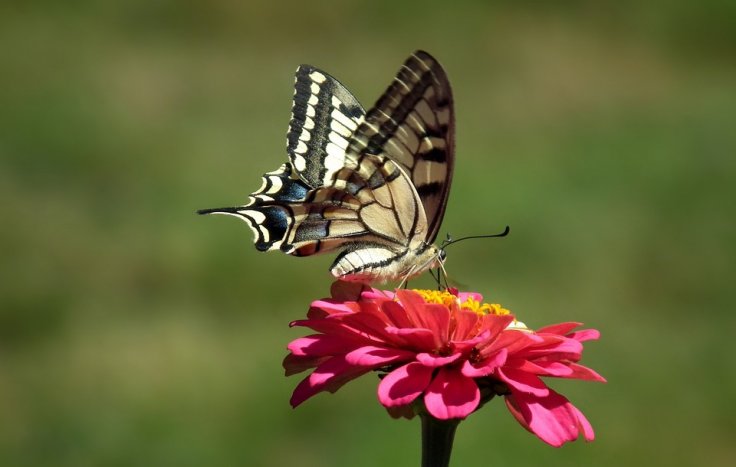
A new study conducted by a researcher at Utrecht University, Netherlands has found that the butterfly proboscis, in layman's term 'butterfly tongue' is more ancient than flowering plants.
The new finding is breaking all the traditional ideas about proboscis, and now, it has become pretty clear that moths and butterflies made our nature colorful, way before flowering plants came into existence. The new study report is published in the recent edition of the Science Advances journal.
"What we found is that there were moths and butterflies with a proboscis that were already around way before there is evidence of flowering plants," said Timo van Eldijk, the lead author of the study.
Even though fossils of butterflies and moths are really rare, scientists succeeded in recovering one from German soil cores, and it finally resulted in this milestone find. Researchers initially dug the delicate relics out of rocks in northern Germany and examined the scales that cover butterfly and moth wings, bodies, and legs with the help of a very powerful microscope.
During the research, Timo van Eldijk found that some of the scales were hollow, and the only butterfly species with hollow scales are Glossata, all of whose population holds proboscis.
"The most exciting thing was the hollow scales. If you find the hollow scales, you know the innovation of the proboscis must have occurred before that," said the researcher.
Further analysis of the remnants helped scientists to understand that the butterfly which dated back to 200 million years ago had a proboscis which helped them to suck honey from flowers. Interestingly, flowering plants started growing on this particular landscape about 140 to 160 million years ago.
According to Eldijk, these proboscises might have helped butterflies to stay hydrated in the pre-historic climate, as they could lap up droplets easily from plants' cones.








